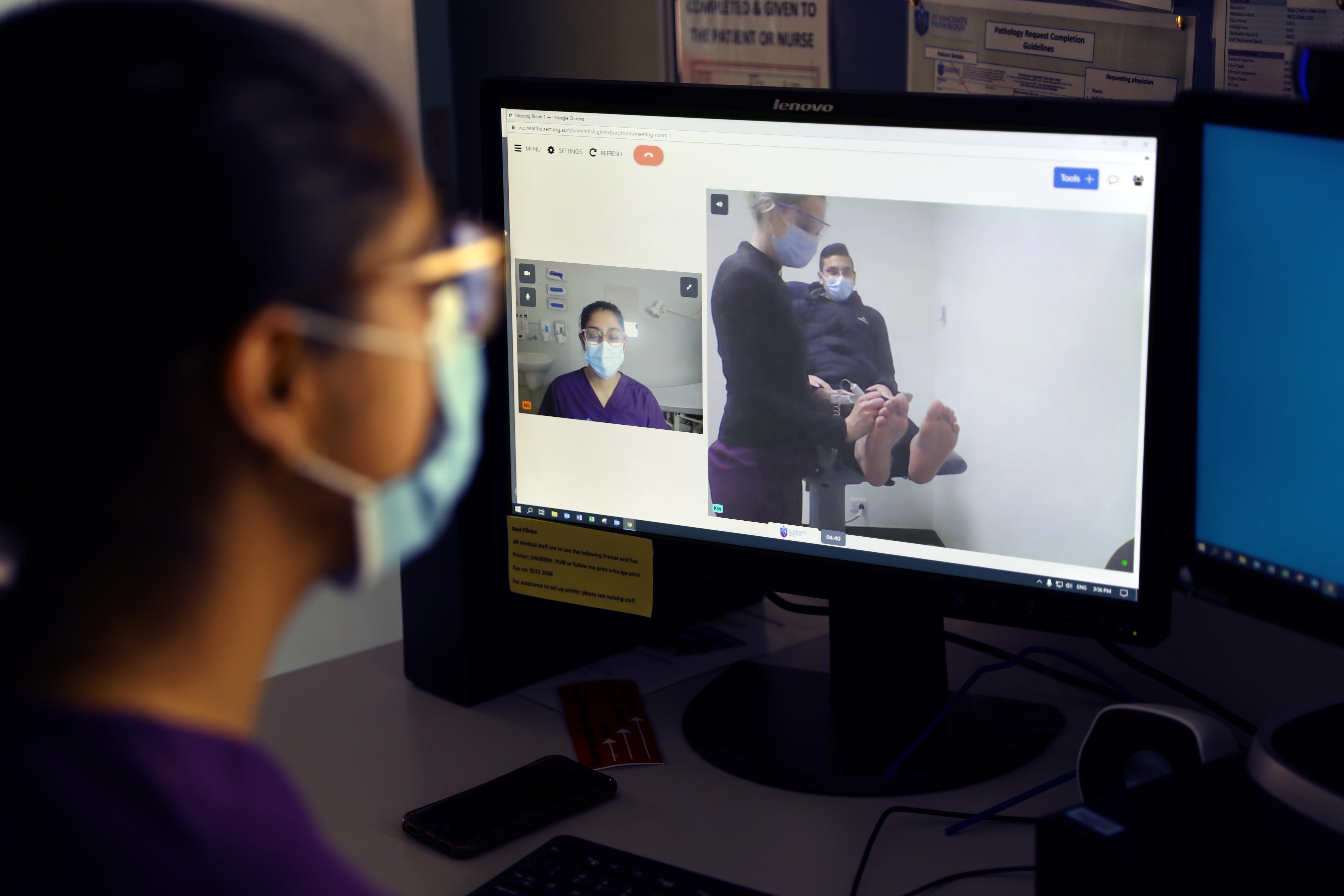New telehealth approach to treat high risk foot problems

A telehealth service offered by the High Risk Foot team is making it easier for regional residents to access the care they need closer to home.
The service complements St Vincent’s Hospital Melbourne’s (SVHM) focus to expand healthcare beyond the hospital walls by allowing people to attend an interdisciplinary assessment off-site.
“We have a huge cohort of regional patients that will benefit from this – some of them travel hundreds of kilometres to get here,” says Kate Waller, a senior podiatrist with the High Risk Foot Service which operates as an outpatient clinic once a week from SVHM.
The service provides vascular, endocrinology, rehabilitation, podiatry, orthotics and nursing care to referred patients.
The main goal of the clinic is to lower hospital admissions and reduce lower-limb amputations.
According to Diabetic Foot Australia, 50,000 Australians were living with diabetic foot disease on any given day in 2017 and 12,500 were living with a diabetes-related amputation.
Forward thinking
The High Risk Foot Service has been regularly providing telehealth consultations since April to assess and manage people suffering from conditions such as diabetes-related foot ulcers and peripheral arterial disease.
So far 41 telehealth consultations have been successfully conducted with patients, largely from Albury/Wodonga and Swan Hill. This service is also being used to assist patients in residential aged care and clients using SVHM’s Hospital in the Home program.
Kate says the telehealth option not only saves patients travel time, but also extra costs that might be incurred in taking time off work, parking, petrol and overnight stays.
“It has also improved the patient experience because they are able to access a lot of their care through people they have a rapport with locally,” she adds.
Boost to care
As a large component of the care required is procedural-based, Kate says telehealth doesn’t eliminate face-to-face contact at the hospital but offers an adjunctive service.
The telehealth consults involve various members from the St Vincent’s High Risk Foot team conducting an appointment remotely with a patient and their local clinician.
“Because the clinician will be with the patient at the other end, they are able to do some of the procedural assessments, such as feeling for pulses, conducting Doppler assessments, cleaning and dressing the wounds,” Kate says.
They can even organise for things like x-rays to be done closer to home.
“Offering this service has also allowed us to build stronger relationships with service providers in these local communities and share our skill set with them,” Kate adds.
Patient experience
Norman McLeod is among those who have recently used the telehealth High Risk Foot Service.
The Albury resident was referred after developing a cyst on his left heel, which was causing him great pain.
Norman recently had stents put into his left leg at St Vincent’s, so he was already familiar with the high-level care they offered.
“I’d never done a telehealth appointment before, though, and found it was great,” Norman says. “It saved me having to go all the way to Melbourne again, where I would have had to stay the night because I live so far away.”
Melbourne’s recent COVID restrictions added an extra layer of complexity for regional patients like Norman, who were required to self-isolate on returning home after treatment in the city.
“I didn’t have to do that this time with my telehealth appointment. It just made things so much simpler and has given me a lot of peace of mind.”